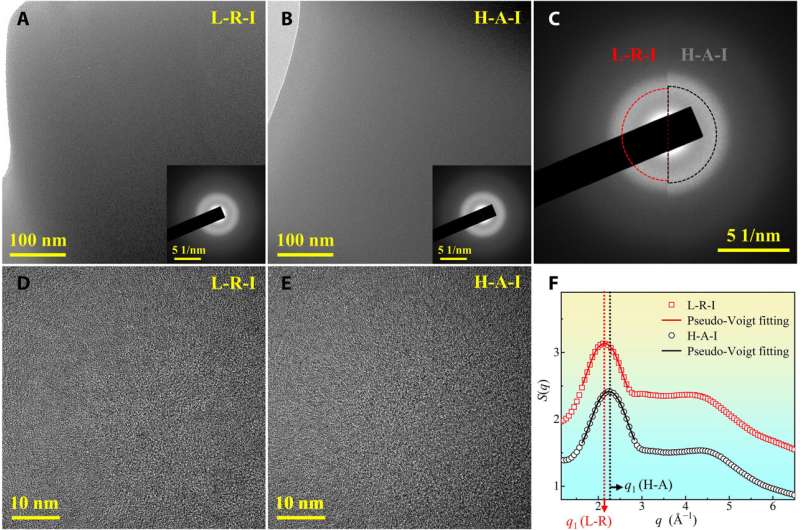November 10, 2023 report
This article has been reviewed according to Science X's editorial process and policies. Editors have highlighted the following attributes while ensuring the content's credibility:
fact-checked
peer-reviewed publication
trusted source
proofread
What exposure to radiation does to glass on the moon over billions of years

A team of materials scientists at Songshan Lake Materials Laboratory, working with colleagues from the China Academy of Space Technology and the Chinese Academy of Sciences, all in China, has found that billions of years of exposure to radiation has made glass on the moon harder.
In their paper published in the journal Science Advances, the group describes how they tested samples of lunar regolith brought to Earth by China's Chang'e-5 lunar lander and then treated the samples to rejuvenate them for comparison purposes.
Humans have been making glass for approximately 4,000 years; nature, on the other hand, has been doing it for billions of years. In this new effort, the research team studied glass that has been made naturally on the moon by meteoroids striking, and melting lunar regolith—some of it billions of years old.
Prior research has shown that the surface of the moon is littered with tiny bits of glass, each of which has been subjected to cosmic rays and radiation from the sun. In this new effort, the research team wanted to know what sort of impact such bombardment has had on the moon glass.
To find out, the researchers obtained five very tiny pieces of glass brought back by the Chang'e-5 lunar lander—each was no bigger around than the width of a human hair. Each was studied using a transmission electron microscope, which gave the team a view of its structure. They also squeezed each sample to see how they reacted to force. Both of the study methods gave the researchers a baseline to learn more about how aging has impacted the bits of glass.
The research team then subjected each of the glass samples to extreme heat—650° C, for approximately five minutes. Such a heat treatment was just enough to get the glass to start melting, a treatment that the researchers suggest brought the samples back to their original form. Doing so allowed the researchers to compare the original form of the glass with their current state, allowing them to see what billions of years of radiation had done to them.
In looking at the differences, the research team found major changes in Young's modulus, which tests how much force a material can take before it becomes distorted—they found changes of as much as 70%. They also found that the radiation bombardment had made the glass harder.
More information: Ziqiang Chen et al, Geological timescales' aging effects of lunar glasses, Science Advances (2023). DOI: 10.1126/sciadv.adi6086
Journal information: Science Advances
© 2023 Science X Network





















